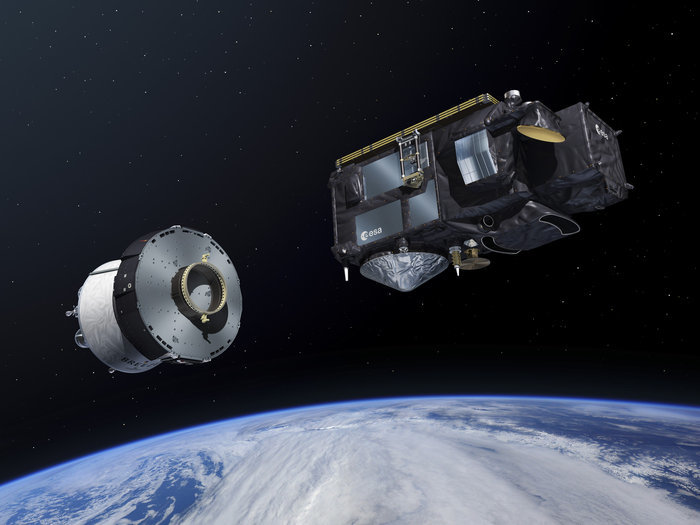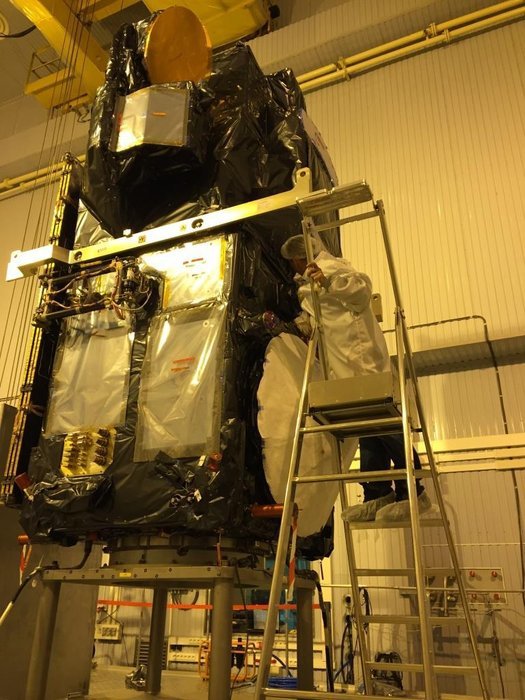.
5.02.2016

Sentinel-3 is arguably the most comprehensive of all the Sentinel missions for Europe’s Copernicus programme. Carrying a suite of state-of-the-art instruments, it provides systematic measurements of Earth’s oceans, land, ice and atmosphere to monitor and understand large-scale global dynamics and provide critical information for ocean and weather forecasting.
.
Moments after Sentinel-3A separates from its rocket, a team of European mission control specialists will assume control, shepherding the new spacecraft through its critical first days in space.
Carrying a suite of cutting-edge instruments, Sentinel-3A is set to join the Sentinel-1A radar satellite and the Sentinel-2A high-resolution optical satellite in orbit to monitor the health of our planet.
This latest multitalented mission will measure Earth’s oceans, land, ice and atmosphere to monitor and understand large-scale global dynamics. It will provide essential information in near-real time for ocean and weather forecasting as part of Europe’s revolutionary Copernicus programme.
The job of lofting the 1150-kg satellite into orbit will be carried out by a multistage 29-m tall Rockot launcher, set to lift off from Plesetsk, Russia, on 16 February.
From its initial leap off the pad at 17:57 UTC (18:57 CET) until the satellite separates from the Breeze upper stage high in space, the journey will take just 80 minutes, with Sentinel-3A injected into a polar orbit at about 815 km altitude, orbiting 40 times faster than an aircraft.
Thirty-six intense hours
At ESOC, ESA’s mission control centre in Darmstadt, Germany, a team of highly trained specialists will be watching closely, waiting for Sentinel-3A to complete an initial automated sequence and start transmitting a signal via the Agency’s Kiruna ground station in Sweden.
“After separation from the Breeze upper stage, we have to wait about 13 minutes for first ‘acquisition of signal’ over Kiruna, while our satellite uses its sensors and actuators to stabilise towards a Sun-pointing attitude,” says Spacecraft Operations Manager José Morales.
“At that point, we expect to establish stable communication with our ‘new-born baby’, enabling us to verify its health and status, assume command and start the complex process of bringing it into a stable Earth-pointing mode.”
Mission controllers will be very anxious to verify that the power-producing solar arrays have automatically deployed, as the onboard batteries will only last five to six hours.
“The first 36 hours will be the most intensive,” says José.
LEOPing round the clock
Receipt of the radio signals from space will mark the start of an extremely busy three-day period for José and his colleagues, who will work round the clock to operate the spacecraft through the critical LEOP – the launch and early orbit phase – for which the Mission Control Team has trained for months.
Training for LEOP involved multiple teams of engineers and scientists at ESOC totalling about 50 people, including spacecraft engineers, specialists working on tracking stations and the sophisticated ‘ground segment’ – the hardware and software used to control the satellite and distribute its data – and experts working in flight dynamics, software and networks, as well as simulation and training teams.
The simulation training campaign followed several years of preparation at the ESOC centre, during which engineers developed flight procedures, built up the ground systems that will control the satellite and tested hardware and software using live data connections to the actual satellite as it was being built and assembled.
Team of teams
For launch, the team at ESOC includes representatives from ESA’s Sentinel project team, as well as several operations engineers integrated within the Flight Control Team and shared with Eumetsat, the European organisation for the exploitation of meteorological satellites.
“This ‘team of teams’ has conducted 25 training sessions since August 2015, using sophisticated simulator software to practice flying the spacecraft through both nominal and contingency situations,” says Pier Paolo Emanuelli, the ESA Flight Director overseeing the launch of all Sentinel satellites.
“The operations and payload teams have worked hard for many months together with colleagues from Eumetsat, the Copernicus project and European industry to ensure everything is ready for Sentinel-3A launch.”
Eumetsat will take over responsibility for Sentinel-3A at the start of the operational phase, once it has been fully checked out and its payload commissioned, expected in July.
“On launch day, when we catch the first signals from space, that’s when teamwork, experience and expertise will combine to ensure the success of this crucial mission,” says Paolo Ferri, Head of Mission Operations at ESA.
.

The Sentinel-3A satellite being prepared for launch at the Plesetsk cosmodrome in Russia.
Quelle: ESA
3400 Views
